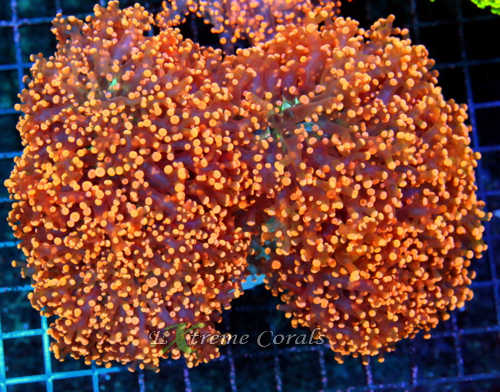Extreme Corals News and Updates
How to care for LPS Corals
Keeping LPS (Large Polyp Stony) corals in a home reef tank can be a rewarding experience, but it requires some effort and attention to detail. Here are some best practices to consider
Learn how to properly care for your LPS coral from lighting, water quality, and more.
by Test test • February 20, 2023
Keeping LPS (Large Polyp Stony) corals in a home reef tank can be a rewarding experience, but it requires some effort and attention to detail. Here are some best practices to consider:
- Lighting: LPS corals need moderate to high lighting, depending on the species. It's best to use a high-quality LED light fixture designed for reef aquariums. Make sure the light is strong enough to penetrate to the bottom of the tank, where some LPS corals may be located.
- Water quality: Water quality is critical forLPS corals. The ideal parameters for LPS corals include a pH range of 8.0-8.4, alkalinity (KH) of 8-12 dKH, calcium levels between 380-450 ppm, and magnesium levels between 1200-1400 ppm. Keep up with regular water changes, use a protein skimmer, and consider adding a calcium reactor or dosing supplements to maintain stable water parameters.
- Flow: LPS corals need moderate water flow to keep them healthy. Make sure there is enough flow in the tank to keep detritus and debris from settling on the coral, but not so much that it causes the coral to close up. Aim for a flow rate of around 10-15 times the volume of the tank per hour.
- Feeding: While LPS corals can get some of their nutrition from photosynthesis, they also benefit from supplemental feeding. Offer a variety of foods, such as small pieces of shrimp, mysis, or krill. Feed the corals two to three times a week, being careful not to overfeed and cause excess nutrient buildup in the tank.
- Placement: When placing LPS corals in the tank, consider their lighting and flow requirements. Some LPS corals prefer low light and low flow, while others need more intense lighting and higher flow. Research the specific needs of the corals you want to keep and place them in an appropriate spot in the tank.
- Quarantine: Always quarantine new corals before adding them to your main display tank. This can help prevent the spread of disease or parasites to your existing corals.
overall rating:
my rating:
log in to rate
Please log in to leave a comment.
For more information visit: additional resources

